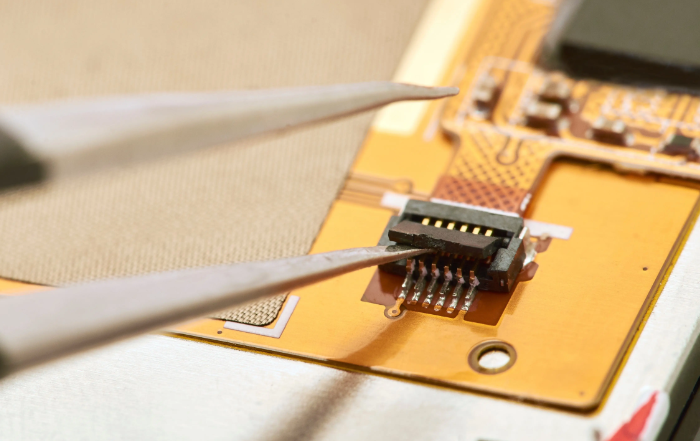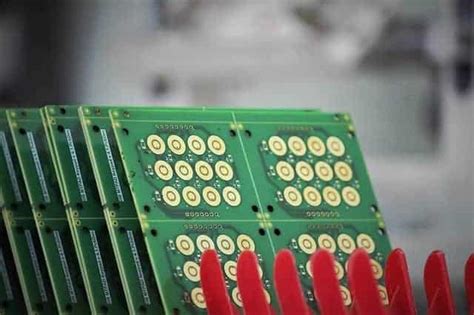Flex pcb voltage rating
Understanding Flex PCB Voltage Rating: Key Factors and Considerations
Understanding the voltage rating of flexible printed circuit boards (flex PCBs) is crucial for ensuring the reliability and safety of electronic devices.
Flex PCBs are widely used in various applications due to their ability to bend and conform to different shapes, making them ideal for compact and complex electronic assemblies. However, the voltage rating of these circuits must be carefully considered to prevent electrical failures and ensure optimal performance.
The voltage rating of a flex PCB refers to the maximum voltage that the circuit can safely handle without risking dielectric breakdown or other forms of electrical failure.
Several key factors influence this rating, including the materials used, the thickness of the dielectric layers, the design of the circuit, and the operating environment. Understanding these factors is essential for engineers and designers to make informed decisions when developing flex PCBs for specific applications.
One of the primary factors affecting the voltage rating of a flex PCB is the choice of materials.
The dielectric material, typically polyimide or polyester, plays a significant role in determining the circuit’s voltage tolerance. Polyimide, for instance, is known for its excellent thermal stability and electrical insulation properties, making it a popular choice for high-voltage applications. Polyester, on the other hand, is more cost-effective but may have lower voltage tolerance compared to polyimide. Therefore, selecting the appropriate dielectric material based on the application’s voltage requirements is critical.
In addition to material selection, the thickness of the dielectric layers also impacts the voltage rating.
Thicker dielectric layers provide better insulation and can withstand higher voltages. However, increasing the thickness may also affect the flexibility of the PCB, which is a key advantage of using flex circuits. Therefore, a balance must be struck between achieving the desired voltage rating and maintaining the necessary flexibility for the application.
The design of the flex PCB is another crucial consideration.
The spacing between conductive traces, the width of the traces, and the overall layout of the circuit can all influence the voltage rating. For instance, increasing the spacing between traces can reduce the risk of electrical arcing and improve the voltage tolerance. Similarly, wider traces can handle higher currents and voltages more effectively. Therefore, careful attention to design details is essential to optimize the voltage rating of the flex PCB.
The operating environment also plays a significant role in determining the voltage rating.
Factors such as temperature, humidity, and exposure to chemicals can affect the dielectric properties of the materials used in the flex PCB. High temperatures, for example, can reduce the dielectric strength of polyimide, leading to a lower voltage rating. Similarly, high humidity levels can increase the risk of moisture ingress, which can compromise the insulation properties of the dielectric material. Therefore, understanding the environmental conditions in which the flex PCB will operate is crucial for ensuring its reliability and safety.
In conclusion, the voltage rating of flex PCBs is influenced by several key factors, including material selection, dielectric thickness, circuit design, and operating environment. By carefully considering these factors, engineers and designers can develop flex PCBs that meet the specific voltage requirements of their applications while ensuring reliability and safety. As technology continues to advance, the demand for flexible and high-performance electronic circuits will only increase, making it essential to understand and optimize the voltage rating of flex PCBs.

How to Determine the Voltage Rating for Your Flex PCB Design
Determining the voltage rating for your flex PCB design is a critical step in ensuring the reliability and safety of your electronic device. The voltage rating of a flexible printed circuit board (PCB) is influenced by several factors, including the materials used, the design layout, and the operating environment. Understanding these factors and how they interact is essential for making informed decisions during the design process.
To begin with, the choice of materials plays a significant role in determining the voltage rating of a flex PCB.
The dielectric properties of the substrate material, such as polyimide or polyester, directly affect the board’s ability to withstand electrical stress. Polyimide, for instance, is known for its excellent thermal stability and dielectric strength, making it a popular choice for high-voltage applications. Conversely, polyester, while more cost-effective, may not offer the same level of performance under high voltage conditions. Therefore, selecting the appropriate substrate material based on the intended application is paramount.
In addition to material selection, the design layout of the flex PCB also impacts its voltage rating.
The spacing between conductive traces, known as the clearance, must be carefully considered to prevent electrical arcing and short circuits. As a general rule, higher voltage applications require greater clearance between traces. This is because the potential for dielectric breakdown increases with voltage, necessitating more substantial separation to ensure safe operation. Moreover, the thickness of the dielectric layer between conductive layers should be sufficient to withstand the applied voltage. Thicker dielectric layers provide better insulation and reduce the risk of breakdown.
Furthermore, the operating environment of the flex PCB must be taken into account when determining its voltage rating.
Factors such as temperature, humidity, and exposure to chemicals can affect the dielectric properties of the substrate material and, consequently, the board’s voltage rating. For example, high temperatures can degrade the dielectric strength of polyimide, reducing its ability to insulate against high voltages. Similarly, high humidity levels can lead to moisture absorption, which can compromise the insulation properties of the substrate. Therefore, it is essential to consider the environmental conditions in which the flex PCB will operate and select materials and design parameters that can withstand these conditions.
Another important consideration is the testing and validation of the flex PCB design.
Before finalizing the design, it is advisable to conduct thorough testing to verify that the board can handle the intended voltage levels. This may involve subjecting the board to high voltage stress tests and measuring its performance under various conditions. By doing so, potential issues can be identified and addressed early in the design process, reducing the risk of failure in the final product.
In conclusion, determining the voltage rating for your flex PCB design requires a comprehensive understanding of the materials, design layout, and operating environment. By carefully selecting the appropriate substrate material, ensuring adequate clearance and dielectric thickness, and considering environmental factors, you can design a flex PCB that meets the required voltage specifications. Additionally, thorough testing and validation are essential to confirm that the design can withstand the intended voltage levels. By following these guidelines, you can ensure the reliability and safety of your flex PCB in its intended application.

Common Mistakes to Avoid When Specifying Flex PCB Voltage Ratings
When specifying flex PCB voltage ratings, it is crucial to avoid common mistakes that can compromise the performance and reliability of the final product.
One of the most frequent errors is underestimating the importance of the dielectric material.
The dielectric material’s properties significantly influence the voltage rating, and selecting an inappropriate material can lead to dielectric breakdown, which can cause short circuits and potential failure of the entire system. Therefore, it is essential to choose a dielectric material that can withstand the intended operating voltage.
Another common mistake is neglecting to consider the operating environment.
Flex PCBs are often used in applications where they are exposed to harsh conditions, such as extreme temperatures, humidity, and mechanical stress. These factors can affect the voltage rating of the PCB. For instance, high temperatures can reduce the dielectric strength of the material, leading to a lower voltage rating. Similarly, exposure to moisture can cause the dielectric material to absorb water, which can also reduce its effectiveness. Therefore, it is important to take into account the operating environment when specifying the voltage rating.
In addition, many designers overlook the impact of the PCB layout on the voltage rating.
The spacing between conductors, the width of the traces, and the overall design of the PCB can all influence the voltage rating. For example, if the spacing between conductors is too small, it can lead to arcing and short circuits, especially at higher voltages. Therefore, it is important to follow industry standards and guidelines for PCB layout to ensure that the voltage rating is not compromised.
Furthermore, it is a common mistake to ignore the importance of testing and validation.
Even if the design and materials are carefully selected, it is essential to test the final product to ensure that it meets the specified voltage rating. This includes performing dielectric withstand tests, insulation resistance tests, and other relevant tests to verify that the PCB can operate safely at the intended voltage. Skipping these tests can result in undetected issues that could lead to failure in the field.
Another pitfall is failing to consider the long-term reliability of the flex PCB.
Over time, factors such as thermal cycling, mechanical stress, and environmental exposure can degrade the materials and reduce the voltage rating. Therefore, it is important to consider the long-term performance of the PCB and select materials and designs that can maintain their voltage rating over the expected lifespan of the product.
Lastly, communication between the design team and the manufacturer is often overlooked.
Miscommunication or lack of clarity in the specifications can lead to errors in the manufacturing process, resulting in a PCB that does not meet the required voltage rating. It is important to provide clear and detailed specifications and to work closely with the manufacturer to ensure that the final product meets all requirements.
In conclusion, specifying flex PCB voltage ratings requires careful consideration of various factors, including the dielectric material, operating environment, PCB layout, testing and validation, long-term reliability, and clear communication with the manufacturer. By avoiding these common mistakes, designers can ensure that their flex PCBs will perform reliably and safely at the intended voltage, thereby enhancing the overall quality and performance of the final product.
The Impact of Voltage Rating on Flex PCB Performance and Reliability
The impact of voltage rating on flex PCB performance and reliability is a critical consideration in the design and application of flexible printed circuit boards (PCBs). Flex PCBs, known for their ability to bend and conform to various shapes, are increasingly used in a wide range of electronic devices, from consumer electronics to medical equipment and aerospace applications. Understanding the voltage rating of these circuits is essential to ensure their optimal performance and long-term reliability.
Voltage rating refers to the maximum voltage that a flex PCB can safely handle without risking damage or failure.
This parameter is influenced by several factors, including the materials used, the thickness of the dielectric layers, the spacing between conductive traces, and the overall design of the circuit. When a flex PCB is subjected to voltages exceeding its rated capacity, it can lead to dielectric breakdown, arcing, and ultimately, catastrophic failure of the circuit. Therefore, selecting the appropriate voltage rating is paramount to the success of any application involving flex PCBs.
One of the primary factors affecting the voltage rating of a flex PCB is the dielectric material.
The dielectric material serves as an insulator between conductive layers and plays a crucial role in determining the board’s ability to withstand high voltages. Materials with higher dielectric strength can endure greater voltages without breaking down. Consequently, choosing a dielectric material with suitable properties is essential for achieving the desired voltage rating. Additionally, the thickness of the dielectric layer also impacts the voltage rating; thicker layers generally provide better insulation and higher voltage tolerance.
Another important consideration is the spacing between conductive traces on the flex PCB.
Adequate spacing is necessary to prevent electrical arcing, which can occur when high voltage causes a discharge between closely spaced conductors. Design guidelines and industry standards often specify minimum spacing requirements based on the expected operating voltage. Adhering to these guidelines helps ensure that the flex PCB can handle the intended voltage without compromising performance or safety.
Moreover, the overall design and layout of the flex PCB can influence its voltage rating.
Factors such as the arrangement of conductive layers, the presence of vias, and the routing of traces all play a role in determining the board’s voltage handling capabilities. For instance, a well-designed flex PCB with carefully planned trace routing and layer stacking can achieve higher voltage ratings compared to a poorly designed counterpart. Therefore, meticulous design practices are essential to optimize the voltage rating and enhance the reliability of the flex PCB.
In addition to design considerations, environmental factors can also impact the voltage rating of flex PCBs.
Conditions such as temperature, humidity, and exposure to harsh chemicals can affect the dielectric properties of the materials used, potentially reducing the board’s voltage tolerance. Therefore, it is important to consider the operating environment when selecting materials and designing the flex PCB to ensure that it can maintain its performance and reliability under varying conditions.
In conclusion, the voltage rating of flex PCBs is a critical parameter that significantly influences their performance and reliability. By carefully selecting dielectric materials, ensuring adequate spacing between conductive traces, and employing meticulous design practices, engineers can optimize the voltage rating of flex PCBs to meet the demands of their specific applications. Additionally, considering environmental factors and adhering to industry standards further enhances the reliability and longevity of these versatile circuits. As the use of flex PCBs continues to grow across various industries, understanding and managing their voltage rating will remain a key aspect of successful electronic design and implementation.





